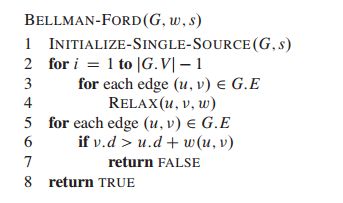- 【智能优化算法】多目标于分解的多目标进化算法MOEA/D算法(Matlab代码实现)
荔枝科研社
单多目标智能算法算法matlab开发语言多目标进化算法MOEA/D算法
目录1概述2数学模型3运行结果4参考文献5Matlab代码及详细文章1概述基于分解的多目标进化算法(multiobjectiveevolu-tionaryalgorithmbasedondecomposition,MOEA/D)是一种利用分解策略解决多目标问题的算法2'。该算法通过聚合函数将多目标问题分解为N个子问题,每个子问题分配一个对应的权重和相关种群点的邻域"3'。种群迭代通过邻域内随机选择
- 推荐使用JMCUProg:基于J-LINK调试器的高效MCU编程工具
平奇群Derek
推荐使用JMCUProg:基于J-LINK调试器的高效MCU编程工具MCUProgMCUprogrammerforJ-LINKandDAPLink,usingKeilMDK's*.FLMFlashingAlgorithm项目地址:https://gitcode.com/gh_mirrors/mc/MCUProg1、项目介绍JMCUProg是一个创新的微控制器编程工具,它利用J-LINK调试器的强大
- 雪花算法(Snowflake Algorithm)
曹牧
热门软件技术算法
雪花算法(SnowflakeAlgorithm)是一种用于生成分布式系统全局唯一ID的解决方案,通过时间戳、机器标识和序列号组合形成64位有序长整型ID。其核心结构包含41位时间戳(精确到毫秒)、10位机器标识(通常分为5位数据中心ID和5位机器ID)及12位序列号,支持高并发场景下每秒生成数百万唯一ID,且具备时间递增特性。核心结构解析雪花算法生成的64位ID结构如下(以常见配置为准)
- 【番外】 AI 时代应具备的四大核心能力
成都犀牛
人工智能大模型人工智能机器学习
四大核心能力AI思维、整合力、引导力、判断力另:如果想快速吸收,可以直接下拉到最后看总结1.AI思维(AIThinking)AI思维是人工智能模型在执行任务时所展现的“思考”方式,是其内部决策逻辑和数据处理能力的体现。算法思维(AlgorithmicThinking):解释:指AI理解和执行决策逻辑的能力。这包括理解任务的内在结构,将问题分解为可处理的步骤,并按照预设或学习到的算法进行处理。它关注
- 探索银行家算法:计算机操作系统的资源管理利器
Kay_Liang
python计算机操作系统银行家算法算法死锁
在计算机操作系统中,资源管理是一个至关重要的任务。操作系统需要确保多个进程能够高效、安全地共享有限的系统资源,同时避免出现死锁现象。死锁是指多个进程因相互等待对方释放资源而陷入永久阻塞的状态,这会导致系统资源的浪费和系统的不可用性。银行家算法(Banker'sAlgorithm)作为一种经典的预防死锁算法,为解决这一问题提供了有效的思路和方法。本文将深入探讨银行家算法的基本原理、实现步骤,并通过代
- MD5文件校验QT C++示例
李工正在搬砖。。。
QTqtc++
MD5文件校验QTC++示例简单介绍1、介绍MD5算法常被用来验证网络文件传输的完整性,防止文件被人篡改。MD5全程是报文摘要算法(Message–DigestAlgorithm5)。此算法对任意长度的信息逐位进行计算,产生一个二进制长度为128位的“指纹”(或称“报文摘要”),不同的文件产生相同的报文摘要的可能性是非常非常之小的。2、特性(1)输入任意长度的信息,经过处理,输出128位的信息(数
- 深入了解域名生成算法(DGA):原理、应用及防御措施
BugHunter666
网络服务器运维linux前端
域名生成算法(DGA,DomainGenerationAlgorithm)是一种用于生成大量域名的算法,通常用于恶意软件和网络攻击中。它们的主要目的是通过生成看似合法的域名来逃避检测和阻止。例如,恶意软件可以使用DGA定期生成新的域名,以避免被网络安全系统发现并封锁。DGA的工作原理:生成域名:DGA通过算法生成大量的随机或伪随机的域名。这些域名通常是由一些固定的字符集和算法生成的,这些算法可能涉
- Java 滑动窗口算法详解及通用实现模板案例示范
J老熊
java算法开发语言面试架构性能优化
1.引言在解决一些子数组或子字符串相关的问题时,滑动窗口算法(SlidingWindowAlgorithm)是一种非常高效的算法策略。它能帮助我们避免使用暴力搜索的方式,减少时间复杂度,尤其在处理大规模数据时表现出色。滑动窗口算法的核心思想是通过一对边界指针来动态调整子数组或子字符串的范围,从而减少不必要的重复计算。本文将详细讲解滑动窗口算法的原理、通用实现模板及其应用场景,并结合实际案例进行示范
- C++——STL标准模板库(算法、容器、迭代器)
木木sa
c++算法java
在被引入C++之前该技术就已经存在了很长的一段时间。后来STL成为ANSI/ISOC++标准的一部分。各个C++厂商也有各自相应的模板库,这些库效率可能很高,但可移植性不一定好。STL以迭代器(Iterators)和容器(Containers)为基础,是一种泛型算法(GenericAlgorithms)库,容器的存在使这些算法有东西可以操作。迭代器(Iterators)是STL的核心,它们是泛型指
- OCCT基础类库介绍:Modeling Algorithm - Boolean Operations
安意诚Matrix
OCCT3d学习开源
BooleanOperationsBooleanoperationsareusedtocreatenewshapesfromthecombinationsoftwogroupsofshapes.OperationResultFuseAllpointsinS1orS2CommonAllpointsinS1andS2CutS1byS2AllpointsinS1andnotinS2布尔运算布尔运算用于通
- 欧几里得算法与扩展算法
欧几里得算法(EuclideanAlgorithm)欧几里得算法(也称为辗转相除法)是一种查找两个正整数aaa和bbb的最大公约数的方法。最大公约数(GCD-GreatestCommonDivisor),另一个名字是HCF(HighestCommonFactor)。例子1:令a=210a=210a=210,b=45b=45b=45210‾=45‾∗4+30‾45‾=30‾∗1+15‾30‾=15‾
- CppCon 2016 学习:STL Algorithms - How to use them; how to write your own
虾球xz
CppCon学习c++开发语言
算法(Algorithms):用模板函数写的、通用且有用的功能块,比如排序、查找、转换等。为什么用STL算法(标准模板库算法):经过充分测试和调试,稳定可靠是编写复杂代码的基本积木使用STL算法写代码更简洁、更易读容易调试和维护方便代码复审和改进你给的例子是经典的冒泡排序实现,然后用STL的std::sort替代:std::vectorv{0,1,3,5,7,9,2,4,6,8};//手写冒泡排序
- 【Algorithm】拓扑排序简单介绍
文章目录拓扑排序简单介绍1基本概念2常见实现方式方法一:Kahn算法(基于入度的广度优先)原理示例代码方法二:DFS(基于深度优先搜索)原理示例代码3拓扑排序在C++实战中的典型场景4检测环5总结拓扑排序简单介绍拓扑排序(TopologicalSort)是图论中的一种重要算法,用于对有向无环图(DAG)中的所有顶点进行线性排序,使得对于每一条有向边u→v,顶点u出现在顶点v之前。在C++开发中,拓
- 注意!这些CCF推荐会议已更名
爱思德学术
人工智能软件工程人机交互
针对中国计算机学会(CCF)推荐国际会议和期刊列表中部分会议和期刊的名称发生变化的情况,CCF学术工作委员会在2024年5月7日发出征集通知,开展部分更名的期刊、会议的确认和推荐列表信息的修订工作。1、WASA:CCFC类更新点:会议全称原会议信息:TheInternationalConferenceonWirelessAlgorithms,Systems,andApplications更新后会议
- 海马优化算法优化支持向量回归(SVR)模型项目
神经网络15044
仿真模型python算法算法回归数据挖掘
海马优化算法优化支持向量回归(SVR)模型项目一、项目概述本项目将实现海马优化算法(SeahorseOptimizationAlgorithm,SOA)优化支持向量回归(SVR)模型的全过程。海马优化算法是一种新型元启发式算法,模拟海马的智能行为(包括移动、捕食和繁殖),能有效解决复杂优化问题。SVR作为强大的回归模型,其性能高度依赖参数选择(C、ε、γ)。本项目将结合SOA和SVR,在Pytho
- ubuntu22.04和ubuntu20.04 的ssh配置不然repo init失败
Auv开心
ssh运维
ubuntu22.04Host*HostKeyAlgorithms+ssh-rsapubkeyAcceptedKeyTypes+ssh-rsaKexAlgorithms+diffie-hellman-group1-sha1ubuntu20.04ubuntu@ubuntu-HP-ProDesk-480-G7-PCI-Microtower-PC:~/zyh$cat~/.ssh/configHost*K
- 《Sklearn 机器学习模型--分类模型》--K-means 聚类(K-means clustering algorithm)
非门由也
机器学习数据分析机器学习sklearn分类
K-means聚类算法K-means聚类算法是一种基于划分的无监督学习算法,通过迭代优化将数据划分为指定簇数(K值),使同一簇内样本相似度最大化、簇间差异最大化34。以下从算法原理、实现步骤、应用场景及优缺点展开说明:一、核心原理与实现步骤核心原理K-均值聚类(K-MeansClustering)是一种无监督学习算法,其基本思想是将数据集划分为K个不同的簇,使得每个样本点都属于离它最近的簇中心。
- 动态多目标进化算法:基于迁移学习的动态多目标遗传算法Tr-NSGA-II求解CEC2015,提供完整MATLAB代码
IT猿手
动态多目标优化MATLAB动态多目标算法迁移学习matlab动态多目标进化算法动态多目标优化算法人工智能机器学习
一、Tr-NSGA-II介绍基于迁移学习的动态多目标遗传算法(TransferLearningbasedDynamicMultiobjectivenon-dominatedsortinggeneticalgorithmII,Tr-NSGA-II)是一种将迁移学习与非支配排序遗传算法(NSGA-II)相结合的优化算法,用于解决动态多目标优化问题。工作原理迁移学习的应用:Tr-NSGA-II利用迁移学
- Router-Routing
sztomarch
服务器linux网络前端运维
导航(返回顶部)1.Router&Routing1.1Router1.2routing1.3CEF2.路由表2.1路由表的组成2.2查看主机的IPv6路由表3.路由协议3.1作用范围3.2Routingalgorithm路由算法3.3路由协议分类3.4路由协议列表3.5EIGRP3.6OSPF3.7OSPF-LSA4.aggregation聚合4.1PA4.2PI4.3PAvsPI5.Supern
- 50行matlab算法,一个用matlab实现的50行的实数染色体遗传算法程序 - 计算模拟 - 小木虫 - 学术 科研 互动社区...
kotlit
50行matlab算法
【本文属作者原创,但已发表于科学网(链接地址:http://blog.sciencenet.cn/blog-3102863-1029280.html),现稍作格式上的修该后转载,并发金币祝大家新年快乐!】1.引言遗传算法(geneticalgorithms)是一种很有意思最优化方法,常用于解决一些传统方法力所不及的多变量最优化问题。这种方法很通用,即用同样的思想可以解决很多不同的问题。只要你能对问
- GaussianPro: 3D Gaussian Splatting with Progressive Propagation(Related Work)
于初见月
paper计算机视觉
Multi-viewStereoMVSaimstoreconstructa3Dmodelfromacollectionofposedimages,whichcanbefurthercombinedwithtraditionalrenderingalgorithmstogeneratenovelviews.Traditionalmethodsexplicitlyestablishpixelcorre
- python算法和数据结构_Python中的数据结构和算法
weixin_26713521
算法数据结构pythonjavaleetcode
python算法和数据结构To至LeonardodaVinci达芬奇(LeonardodaVinci)介绍(Introduction)ThepurposeofthisarticleistogiveyouapanoramaofdatastructuresandalgorithmsinPython.ThistopicisveryimportantforaDataScientistinordertohe
- 遗传算法详解:从自然选择到代码实战
weixin_47233946
算法算法
##引言遗传算法(GeneticAlgorithm,GA)是一类受生物进化论启发的优化算法,自1960年代由JohnHolland提出以来,已广泛应用于工程优化、金融建模、机器学习等领域。本文将深入剖析遗传算法的核心原理、关键组件和典型应用,并通过代码案例展现其具体实现。##1.算法起源与核心思想###1.1生物进化启示遗传算法模拟自然界三种关键机制:-**自然选择**:适者生存的筛选机制-**遗
- MIMO信号检测MMSE-SIC基于SINR性能相较于MMSE性能提升分析
noedn
笔记算法算法mimo
论文:《Performanceofiterativesuccessivedetectionalgorithmwithspace-timetransmission》《Comparisonoforderedsuccessivereceiversforspace-timetransmission》假设系统为接收天线M=2,发射天线N=2假设第一个发射天线发射信号检测正确的概率为p1p_1p1,第二个发射
- 【Algorithm】Segment Tree 简单介绍
CodeWithMe
C/C++c++算法python
文章目录SegmentTree1基本概念2基本思想3适用场景4代码示例(区间求和)5使用示例6使用注意事项7进阶拓展SegmentTree线段树(SegmentTree)是一种高级数据结构,主要用于在区间范围内高效地进行查询与修改操作。它是一个二叉树结构,每个节点代表一个区间的信息,通常用于解决如下问题:1基本概念线段树是对一个区间[l,r]上的数列进行划分,并在每个子区间上维护某种信息(如最值、
- 算法是什么---Deepseek作答
算法(Algorithm)是计算机科学的基石,也是解决现实问题的系统化思维框架。其本质是在有限步骤内,将输入转换为输出的确定性指令序列。以下从数学本质、工程实现、评价维度和前沿发展四个层面进行专业解析:一、数学本质:可计算性理论的映射形式化定义算法可抽象为函数:(f:Input\rightarrowOutput)其中必须满足:有限性(Finiteness):步骤可终止(排除死循环)。确定性(Def
- npm install命令运行出现npm ERR!Cannot read properties of null(reading ‘pickAlgorithm‘)
宅技弟
nodenpm前端node.js
文章目录1.问题描述2.问题解释3.解决方案:1.问题描述在vue项目中,当我们在终端使用指令:npminstall**(下载node_modules(节点_模块)时出现报错。npmERR!Cannotreadpropertiesofnull(reading'pickAlgorithm')翻译:npm错误!无法读取null的属性(读取“pickAlgorithm”)2.问题解释该错误主要是由nod
- 【C++】C++ 并行算法(Parallel Algorithms)介绍
晴雨日记
C++c++开发语言
C++并行算法:原理与实现C++17引入了并行算法(ParallelAlgorithms),通过在标准库算法中增加执行策略(ExecutionPolicy),实现对多核处理器的自动并行化。一、核心原理执行策略(ExecutionPolicy):std::execution::seq:顺序执行(默认)std::execution::par:并行执行(线程级并行)std::execution::par
- 第49期:Codeforces-Round #774(Div.2)
Heptagonalwarrior
Codeforces算法
目录A.SquareCounting(tags:math;*800)B.QualityvsQuantity(tags:bruteforce;constructivealgorithms;greedy;sorting;twopointers;*800)C.FactorialsandPowersofTwo(tags:bitmasks;bruteforce;constructivealgorithms;
- Java-jwt4.4.0版本使用
Java牛马圣体
java
在SpringBoot中使用Auth0的java-jwt4.4.0版本生成JWTToken的步骤如下:1.添加依赖确保pom.xml中添加java-jwt依赖:com.auth0java-jwt4.4.02.配置JWT工具类importcom.auth0.jwt.JWT;importcom.auth0.jwt.algorithms.Algorithm;importcom.auth0.jwt.int
- Js函数返回值
_wy_
jsreturn
一、返回控制与函数结果,语法为:return 表达式;作用: 结束函数执行,返回调用函数,而且把表达式的值作为函数的结果 二、返回控制语法为:return;作用: 结束函数执行,返回调用函数,而且把undefined作为函数的结果 在大多数情况下,为事件处理函数返回false,可以防止默认的事件行为.例如,默认情况下点击一个<a>元素,页面会跳转到该元素href属性
- MySQL 的 char 与 varchar
bylijinnan
mysql
今天发现,create table 时,MySQL 4.1有时会把 char 自动转换成 varchar
测试举例:
CREATE TABLE `varcharLessThan4` (
`lastName` varchar(3)
) ;
mysql> desc varcharLessThan4;
+----------+---------+------+-
- Quartz——TriggerListener和JobListener
eksliang
TriggerListenerJobListenerquartz
转载请出自出处:http://eksliang.iteye.com/blog/2208624 一.概述
listener是一个监听器对象,用于监听scheduler中发生的事件,然后执行相应的操作;你可能已经猜到了,TriggerListeners接受与trigger相关的事件,JobListeners接受与jobs相关的事件。
二.JobListener监听器
j
- oracle层次查询
18289753290
oracle;层次查询;树查询
.oracle层次查询(connect by)
oracle的emp表中包含了一列mgr指出谁是雇员的经理,由于经理也是雇员,所以经理的信息也存储在emp表中。这样emp表就是一个自引用表,表中的mgr列是一个自引用列,它指向emp表中的empno列,mgr表示一个员工的管理者,
select empno,mgr,ename,sal from e
- 通过反射把map中的属性赋值到实体类bean对象中
酷的飞上天空
javaee泛型类型转换
使用过struts2后感觉最方便的就是这个框架能自动把表单的参数赋值到action里面的对象中
但现在主要使用Spring框架的MVC,虽然也有@ModelAttribute可以使用但是明显感觉不方便。
好吧,那就自己再造一个轮子吧。
原理都知道,就是利用反射进行字段的赋值,下面贴代码
主要类如下:
import java.lang.reflect.Field;
imp
- SAP HANA数据存储:传统硬盘的瓶颈问题
蓝儿唯美
HANA
SAPHANA平台有各种各样的应用场景,这也意味着客户的实施方法有许多种选择,关键是如何挑选最适合他们需求的实施方案。
在 《Implementing SAP HANA》这本书中,介绍了SAP平台在现实场景中的运作原理,并给出了实施建议和成功案例供参考。本系列文章节选自《Implementing SAP HANA》,介绍了行存储和列存储的各自特点,以及SAP HANA的数据存储方式如何提升空间压
- Java Socket 多线程实现文件传输
随便小屋
javasocket
高级操作系统作业,让用Socket实现文件传输,有些代码也是在网上找的,写的不好,如果大家能用就用上。
客户端类:
package edu.logic.client;
import java.io.BufferedInputStream;
import java.io.Buffered
- java初学者路径
aijuans
java
学习Java有没有什么捷径?要想学好Java,首先要知道Java的大致分类。自从Sun推出Java以来,就力图使之无所不包,所以Java发展到现在,按应用来分主要分为三大块:J2SE,J2ME和J2EE,这也就是Sun ONE(Open Net Environment)体系。J2SE就是Java2的标准版,主要用于桌面应用软件的编程;J2ME主要应用于嵌入是系统开发,如手机和PDA的编程;J2EE
- APP推广
aoyouzi
APP推广
一,免费篇
1,APP推荐类网站自主推荐
最美应用、酷安网、DEMO8、木蚂蚁发现频道等,如果产品独特新颖,还能获取最美应用的评测推荐。PS:推荐简单。只要产品有趣好玩,用户会自主分享传播。例如足迹APP在最美应用推荐一次,几天用户暴增将服务器击垮。
2,各大应用商店首发合作
老实盯着排期,多给应用市场官方负责人献殷勤。
3,论坛贴吧推广
百度知道,百度贴吧,猫扑论坛,天涯社区,豆瓣(
- JSP转发与重定向
百合不是茶
jspservletJava Webjsp转发
在servlet和jsp中我们经常需要请求,这时就需要用到转发和重定向;
转发包括;forward和include
例子;forwrad转发; 将请求装法给reg.html页面
关键代码;
req.getRequestDispatcher("reg.html
- web.xml之jsp-config
bijian1013
javaweb.xmlservletjsp-config
1.作用:主要用于设定JSP页面的相关配置。
2.常见定义:
<jsp-config>
<taglib>
<taglib-uri>URI(定义TLD文件的URI,JSP页面的tablib命令可以经由此URI获取到TLD文件)</tablib-uri>
<taglib-location>
TLD文件所在的位置
- JSF2.2 ViewScoped Using CDI
sunjing
CDIJSF 2.2ViewScoped
JSF 2.0 introduced annotation @ViewScoped; A bean annotated with this scope maintained its state as long as the user stays on the same view(reloads or navigation - no intervening views). One problem w
- 【分布式数据一致性二】Zookeeper数据读写一致性
bit1129
zookeeper
很多文档说Zookeeper是强一致性保证,事实不然。关于一致性模型请参考http://bit1129.iteye.com/blog/2155336
Zookeeper的数据同步协议
Zookeeper采用称为Quorum Based Protocol的数据同步协议。假如Zookeeper集群有N台Zookeeper服务器(N通常取奇数,3台能够满足数据可靠性同时
- Java开发笔记
白糖_
java开发
1、Map<key,value>的remove方法只能识别相同类型的key值
Map<Integer,String> map = new HashMap<Integer,String>();
map.put(1,"a");
map.put(2,"b");
map.put(3,"c"
- 图片黑色阴影
bozch
图片
.event{ padding:0; width:460px; min-width: 460px; border:0px solid #e4e4e4; height: 350px; min-heig
- 编程之美-饮料供货-动态规划
bylijinnan
动态规划
import java.util.Arrays;
import java.util.Random;
public class BeverageSupply {
/**
* 编程之美 饮料供货
* 设Opt(V’,i)表示从i到n-1种饮料中,总容量为V’的方案中,满意度之和的最大值。
* 那么递归式就应该是:Opt(V’,i)=max{ k * Hi+Op
- ajax大参数(大数据)提交性能分析
chenbowen00
WebAjax框架浏览器prototype
近期在项目中发现如下一个问题
项目中有个提交现场事件的功能,该功能主要是在web客户端保存现场数据(主要有截屏,终端日志等信息)然后提交到服务器上方便我们分析定位问题。客户在使用该功能的过程中反应点击提交后反应很慢,大概要等10到20秒的时间浏览器才能操作,期间页面不响应事件。
根据客户描述分析了下的代码流程,很简单,主要通过OCX控件截屏,在将前端的日志等文件使用OCX控件打包,在将之转换为
- [宇宙与天文]在太空采矿,在太空建造
comsci
我们在太空进行工业活动...但是不太可能把太空工业产品又运回到地面上进行加工,而一般是在哪里开采,就在哪里加工,太空的微重力环境,可能会使我们的工业产品的制造尺度非常巨大....
地球上制造的最大工业机器是超级油轮和航空母舰,再大些就会遇到困难了,但是在空间船坞中,制造的最大工业机器,可能就没
- ORACLE中CONSTRAINT的四对属性
daizj
oracleCONSTRAINT
ORACLE中CONSTRAINT的四对属性
summary:在data migrate时,某些表的约束总是困扰着我们,让我们的migratet举步维艰,如何利用约束本身的属性来处理这些问题呢?本文详细介绍了约束的四对属性: Deferrable/not deferrable, Deferred/immediate, enalbe/disable, validate/novalidate,以及如
- Gradle入门教程
dengkane
gradle
一、寻找gradle的历程
一开始的时候,我们只有一个工程,所有要用到的jar包都放到工程目录下面,时间长了,工程越来越大,使用到的jar包也越来越多,难以理解jar之间的依赖关系。再后来我们把旧的工程拆分到不同的工程里,靠ide来管理工程之间的依赖关系,各工程下的jar包依赖是杂乱的。一段时间后,我们发现用ide来管理项程很不方便,比如不方便脱离ide自动构建,于是我们写自己的ant脚本。再后
- C语言简单循环示例
dcj3sjt126com
c
# include <stdio.h>
int main(void)
{
int i;
int count = 0;
int sum = 0;
float avg;
for (i=1; i<=100; i++)
{
if (i%2==0)
{
count++;
sum += i;
}
}
avg
- presentModalViewController 的动画效果
dcj3sjt126com
controller
系统自带(四种效果):
presentModalViewController模态的动画效果设置:
[cpp]
view plain
copy
UIViewController *detailViewController = [[UIViewController al
- java 二分查找
shuizhaosi888
二分查找java二分查找
需求:在排好顺序的一串数字中,找到数字T
一般解法:从左到右扫描数据,其运行花费线性时间O(N)。然而这个算法并没有用到该表已经排序的事实。
/**
*
* @param array
* 顺序数组
* @param t
* 要查找对象
* @return
*/
public stati
- Spring Security(07)——缓存UserDetails
234390216
ehcache缓存Spring Security
Spring Security提供了一个实现了可以缓存UserDetails的UserDetailsService实现类,CachingUserDetailsService。该类的构造接收一个用于真正加载UserDetails的UserDetailsService实现类。当需要加载UserDetails时,其首先会从缓存中获取,如果缓存中没
- Dozer 深层次复制
jayluns
VOmavenpo
最近在做项目上遇到了一些小问题,因为架构在做设计的时候web前段展示用到了vo层,而在后台进行与数据库层操作的时候用到的是Po层。这样在业务层返回vo到控制层,每一次都需要从po-->转化到vo层,用到BeanUtils.copyProperties(source, target)只能复制简单的属性,因为实体类都配置了hibernate那些关联关系,所以它满足不了现在的需求,但后发现还有个很
- CSS规范整理(摘自懒人图库)
a409435341
htmlUIcss浏览器
刚没事闲着在网上瞎逛,找了一篇CSS规范整理,粗略看了一下后还蛮有一定的道理,并自问是否有这样的规范,这也是初入前端开发的人一个很好的规范吧。
一、文件规范
1、文件均归档至约定的目录中。
具体要求通过豆瓣的CSS规范进行讲解:
所有的CSS分为两大类:通用类和业务类。通用的CSS文件,放在如下目录中:
基本样式库 /css/core
- C++动态链接库创建与使用
你不认识的休道人
C++dll
一、创建动态链接库
1.新建工程test中选择”MFC [dll]”dll类型选择第二项"Regular DLL With MFC shared linked",完成
2.在test.h中添加
extern “C” 返回类型 _declspec(dllexport)函数名(参数列表);
3.在test.cpp中最后写
extern “C” 返回类型 _decls
- Android代码混淆之ProGuard
rensanning
ProGuard
Android应用的Java代码,通过反编译apk文件(dex2jar、apktool)很容易得到源代码,所以在release版本的apk中一定要混淆一下一些关键的Java源码。
ProGuard是一个开源的Java代码混淆器(obfuscation)。ADT r8开始它被默认集成到了Android SDK中。
官网:
http://proguard.sourceforge.net/
- 程序员在编程中遇到的奇葩弱智问题
tomcat_oracle
jquery编程ide
现在收集一下:
排名不分先后,按照发言顺序来的。
1、Jquery插件一个通用函数一直报错,尤其是很明显是存在的函数,很有可能就是你没有引入jquery。。。或者版本不对
2、调试半天没变化:不在同一个文件中调试。这个很可怕,我们很多时候会备份好几个项目,改完发现改错了。有个群友说的好: 在汤匙
- 解决maven-dependency-plugin (goals "copy-dependencies","unpack") is not supported
xp9802
dependency
解决办法:在plugins之前添加如下pluginManagement,二者前后顺序如下:
[html]
view plain
copy
<build>
<pluginManagement
